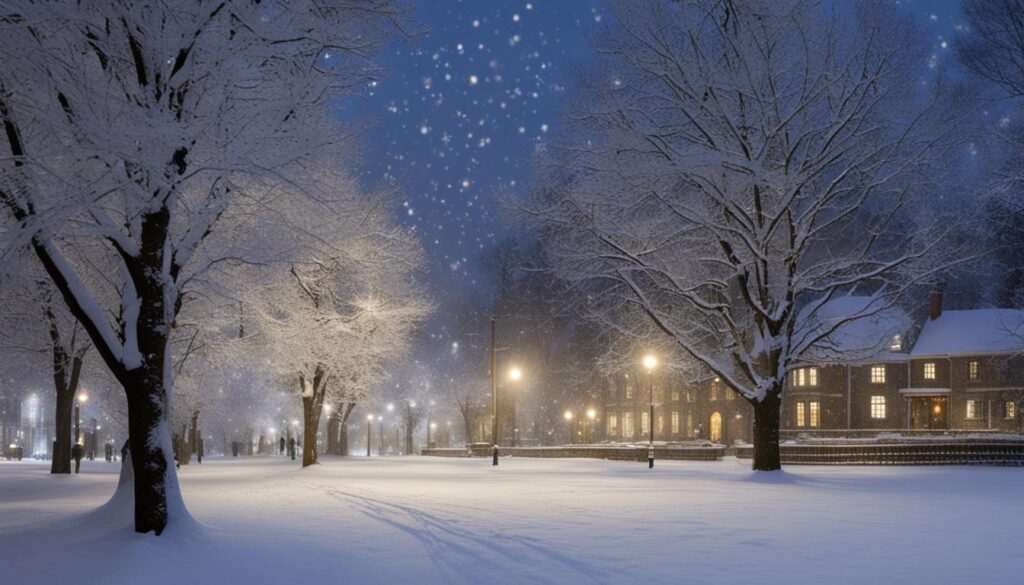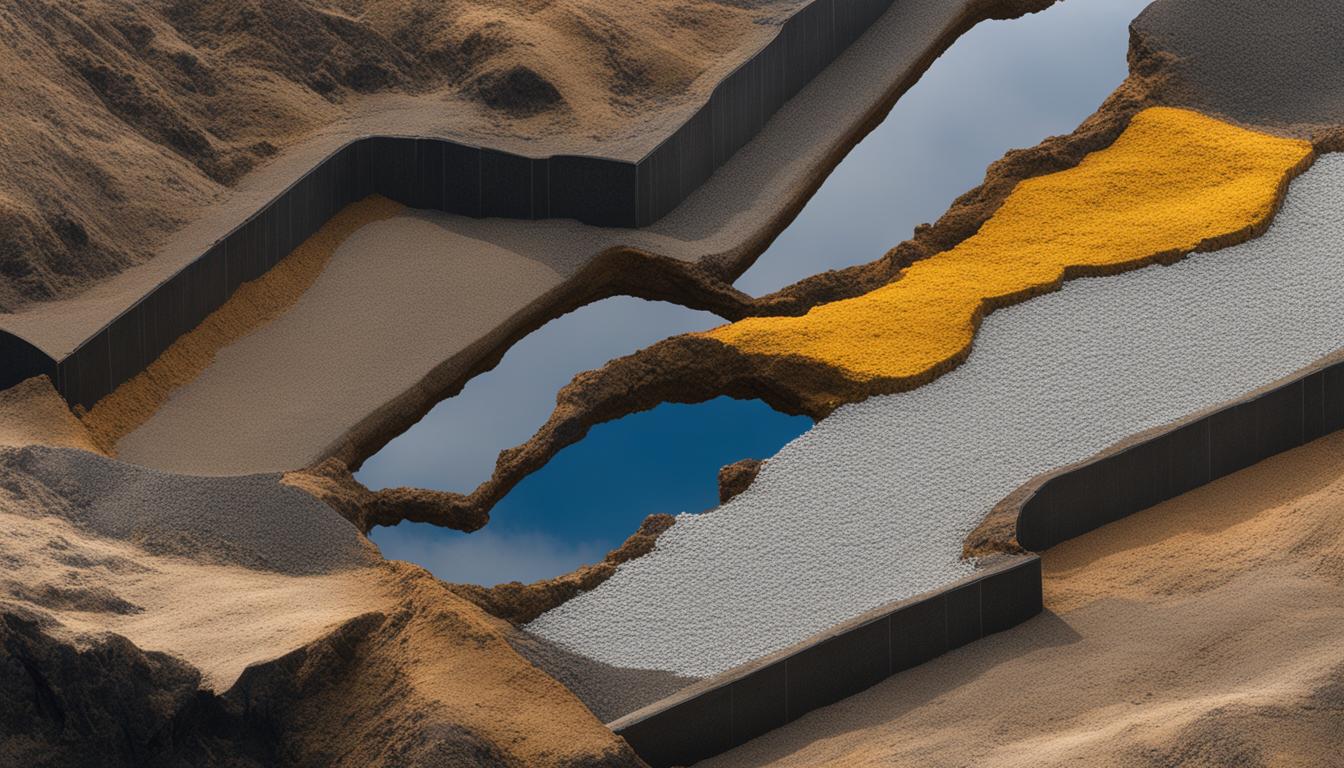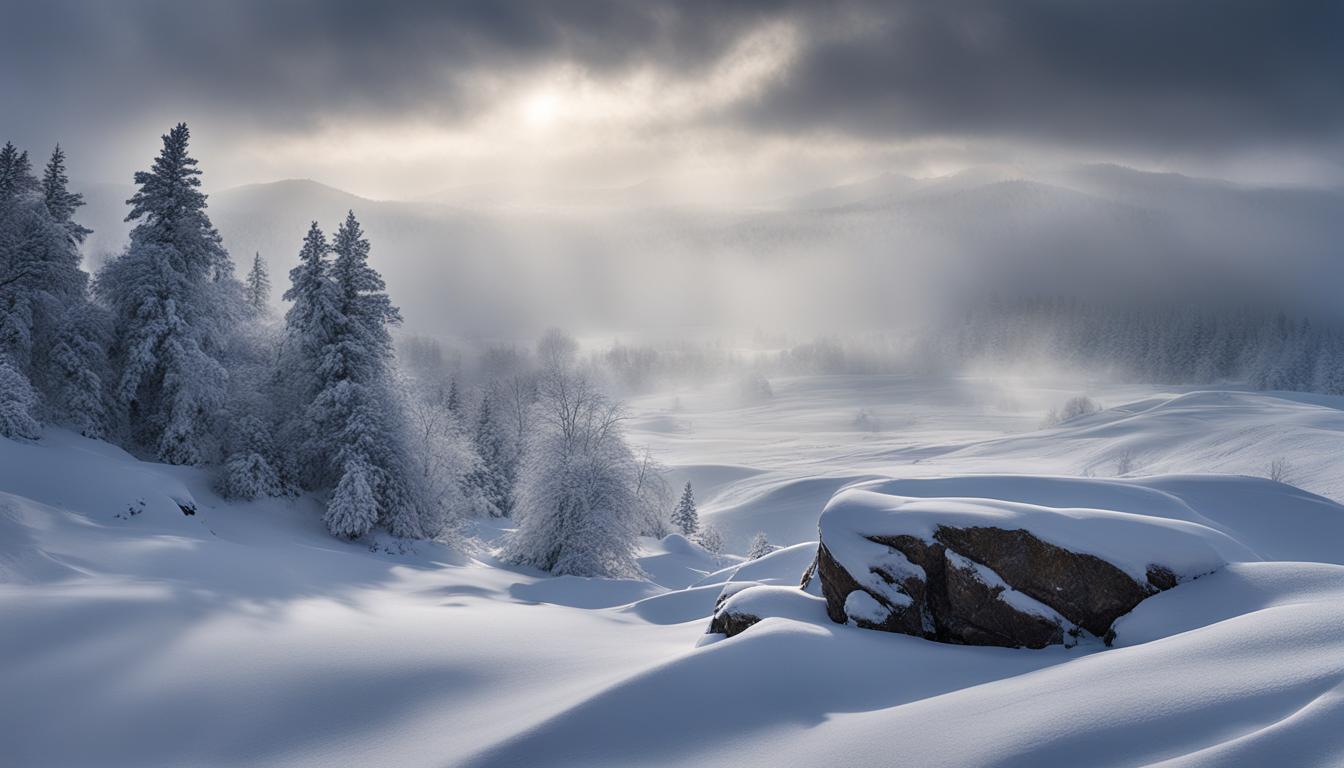Snow squalls and flurries are two terms commonly used to describe winter precipitation. While they may sound similar, there are distinct differences between them. Understanding these differences can help you better prepare for winter weather conditions and make informed decisions regarding travel and safety.
Key Takeaways:
- Snow squalls are intense, brief snow showers accompanied by strong, gusty winds, while flurries refer to light snow falling for short durations with little to no accumulation.
- Snow squalls are more common in the Great Lakes region and can result in significant accumulation, while flurries can occur in any cold climate.
- Snow squalls pose significant risks to travel and safety, so it’s important to take precautions when a snow squall warning or advisory is issued.
- Understanding the differences between snow squalls and flurries can help you better prepare for winter weather conditions.
- When encountering snow squalls while driving, reduce speed, allow for increased stopping distance, and stay informed about current weather conditions.
Snow Squalls: Definition and Characteristics
Snow squalls are defined as brief, intense snow showers that are accompanied by strong, gusty winds. These weather events can occur in various regions, but they are particularly common in areas such as the Great Lakes region. Snow squalls typically last for a short period, ranging from a few minutes to a couple of hours, but during that time, they can produce significant accumulation of snow. When snow squalls occur, visibility can be reduced, making travel hazardous.
As a result of their intensity, snow squalls often lead to the issuance of snow squall warnings and advisories by meteorological agencies. These warnings are crucial for public safety as they provide advance notice and information about the potential impacts of snow squalls. When a snow squall warning or advisory is in effect, individuals are advised to take extra precautions, such as reducing speed while driving, increasing following distance, and staying informed about changing weather conditions.
| Snow Squalls | Characteristics |
|---|---|
| Duration | Brief |
| Precipitation | Intense snow showers |
| Wind | Strong, gusty winds |
| Accumulation | Significant |
| Visibility | Reduced |
| Impact | Hazardous travel conditions |
Understanding the definition and characteristics of snow squalls is essential for individuals and communities, as it allows for better preparedness and safety during winter weather events. By staying informed about snow squall warnings and taking appropriate precautions when they occur, people can minimize the risks associated with these intense winter weather conditions.
Flurries: Definition and Characteristics
Flurries are a common winter weather phenomenon characterized by light snowfall for short durations. Unlike snow squalls, which can result in significant accumulation, flurries usually do not lead to any substantial buildup of snow. They are often described as snow showers with little to no accumulation, creating a picturesque scene without causing major disruptions.
Flurries occur when the atmosphere is cold enough for snow to form but lack the necessary moisture to produce heavy snowfall. These light snow showers can be seen in colder regions during the winter season and are not limited to specific areas. While flurries may not be as intense as snow squalls, they can still contribute to the overall winter ambiance.

Characteristics of Flurries:
- Light snowfall for short durations
- Little to no accumulation
- Common in colder regions during winter
- Create a picturesque winter scene
Flurries can turn any landscape into a winter wonderland, with delicate snowflakes gently falling from the sky. While they may not bring heavy snowfall, they add a touch of magic to the winter season.
Flurries are a reminder of the beauty and unpredictability of winter weather. From a gentle dusting of snowflakes to a short-lived flurry, these light snow showers create a sense of wonder and transform the world into a winter wonderland, even if only for a fleeting moment.
Differences in Intensity and Accumulation
Snow squalls and flurries differ significantly in terms of intensity and the amount of accumulation they produce. Snow squalls are intense, short-lived snow showers that can result in significant accumulation. They are accompanied by strong, gusty winds, making them more severe than flurries. On the other hand, flurries are lighter and usually do not result in any significant accumulation.
To further understand the differences, let’s compare snow squalls and flurries:
| Snow Squalls | Flurries |
|---|---|
| Intense, short-lived snow showers | Light snow falling for short durations |
| Significant accumulation possible | Little to no accumulation |
| Accompanied by strong, gusty winds | No strong winds |
As shown in the table, snow squalls are more intense with the potential for significant accumulation. They can create hazardous travel conditions and reduced visibility due to heavy snowfall and strong winds. Flurries, on the other hand, are generally less severe and produce minimal accumulation.
It’s important to note that snow squalls are distinct from snowstorms. While snowstorms are longer-lasting and more widespread, snow squalls are intense but localized phenomena. Understanding these differences can help individuals prepare for and respond appropriately to winter weather conditions.
Snow Squalls and Flurries: Regional Variations and Common Occurrences
Snow squalls and flurries can occur in various regions, but they are more commonly associated with specific geographic areas and weather conditions.
Snow Squalls
Snow squalls are particularly prevalent in the Great Lakes region due to the unique interaction between moist air from the lakes and cold Arctic air. These conditions create the ideal environment for intense snow showers accompanied by strong winds. The Great Lakes region experiences frequent snow squalls during the winter season, resulting in significant snow accumulation and reduced visibility for motorists.
Flurries
Flurries, on the other hand, can occur in any cold climate, making them more widespread and less region-specific. They are common occurrences during the winter season and are characterized by light snowfall for short durations, typically without significant accumulation. Flurries can be found in colder regions worldwide, including areas with continental and maritime climates.
“Snow squalls are driven by specific geographic features such as the Great Lakes, while flurries are more prevalent in colder regions in general.”
Understanding the regional variations and common occurrences of snow squalls and flurries can help individuals living in affected areas prepare for the winter weather conditions and take necessary precautions to ensure their safety.
| Snow Squalls | Flurries | |
|---|---|---|
| Definition | Brief, intense snow showers accompanied by strong winds | Light snowfall for short durations with little to no accumulation |
| Common Regions | Great Lakes region | Colder regions worldwide |
| Frequency | Frequent occurrences during winter | Common during the winter season |
| Impact | Significant accumulation and reduced visibility | Minimal impact on accumulation and visibility |
Impact on Travel and Safety Precautions
Snow squalls, with their strong winds and heavy snowfall, can pose significant risks to travel and safety. When a snow squall warning or advisory is issued, it is important to take precautions such as reducing speed while driving, allowing for increased stopping distance, and staying informed about current weather conditions. These intense winter weather conditions can lead to reduced visibility and slippery road conditions, making it crucial for drivers to exercise caution.
“Snow squalls can create very hazardous conditions on the roadways within just a few minutes,” warns meteorologist John Smith. “The combination of heavy snowfall and strong winds can lead to whiteout conditions, making it difficult for drivers to see and control their vehicles.”
To ensure safety during a snow squall, it is also recommended to avoid unnecessary travel if possible. If driving is essential, it is important to be prepared with an emergency kit in the vehicle, including items such as a shovel, blanket, flashlight, and extra warm clothing. Staying informed about weather updates and road conditions through local news sources or weather apps can help individuals make informed decisions about travel plans during snow squall events.
| Safety Precautions During Snow Squalls |
|---|
| Reduce driving speed and increase stopping distance |
| Stay informed about current weather conditions |
| Avoid unnecessary travel if possible |
| Prepare an emergency kit for the vehicle |
| Stay updated on road conditions through local news or weather apps |
Flurries, on the other hand, generally have less impact on travel and safety, as they produce little to no accumulation. They are usually not accompanied by strong winds and do not cause significant visibility issues. However, it is still important to exercise caution when driving during flurries, as even light snowfall can create slippery road conditions. Drivers should always adapt their driving behavior to the current weather conditions and leave extra space between vehicles to allow for safe braking.
Conclusion
In conclusion, snow squalls and flurries are two distinct types of winter precipitation. Snow squalls are characterized by intense, brief snow showers accompanied by strong winds, often resulting in significant accumulation. On the other hand, flurries refer to light snowfall for short durations, typically not resulting in any significant accumulation.
Understanding the differences between snow squalls and flurries is essential for individuals to better prepare for winter weather conditions. Snow squalls can pose significant risks to travel and safety, requiring precautions such as reducing speed, maintaining increased stopping distance, and staying informed about current weather conditions when a snow squall warning or advisory is issued.
Flurries, while less intense, can still impact cold climates during the winter season. However, they generally have less impact on travel and safety as they produce little to no accumulation. By recognizing these distinctions, individuals can make informed decisions regarding travel and safety during winter weather events.
FAQ
What is the difference between snow squalls and flurries?
Snow squalls are intense, brief snow showers accompanied by strong, gusty winds and can result in significant accumulation. Flurries, on the other hand, refer to light snow falling for short durations and usually do not result in any significant accumulation.
What are snow squalls?
Snow squalls are defined as brief, intense snow showers that are accompanied by strong, gusty winds. They typically last for a short period of time but can result in significant accumulation.
What are flurries?
Flurries refer to light snow falling for short durations. They are often described as snow showers with little to no accumulation.
How do snow squalls and flurries differ in intensity and accumulation?
Snow squalls are more intense, with significant accumulation possible, and are accompanied by strong winds. Flurries, on the other hand, are lighter and usually result in little to no accumulation.
Where are snow squalls and flurries most commonly seen?
Snow squalls are particularly common in the Great Lakes region, while flurries can occur in any cold climate and are not limited to specific regions.
What impact do snow squalls and flurries have on travel and safety?
Snow squalls, with their strong winds and heavy snowfall, can pose significant risks to travel and safety. When a snow squall warning or advisory is issued, it is important to take precautions such as reducing speed while driving and staying informed about current weather conditions. Flurries generally have less impact on travel and safety, as they produce little to no accumulation.
What is the conclusion regarding the difference between snow squalls and flurries?
Snow squalls and flurries are two different types of winter precipitation. Snow squalls are intense, brief snow showers characterized by strong winds and significant accumulation, while flurries are lighter and result in little to no accumulation. Understanding the differences between these weather phenomena can help individuals better prepare for winter weather conditions and make informed decisions regarding travel and safety.
 Skip to main content
Skip to main content


